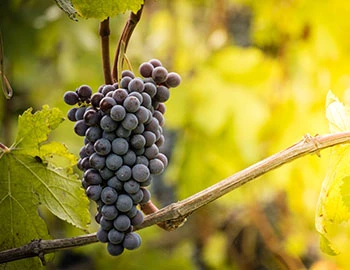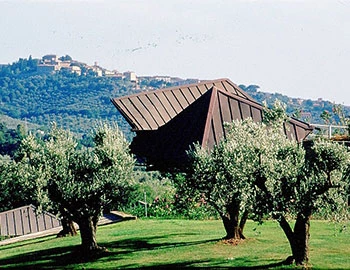Barolo Rocche dell'Annunziata 2020
DOCG, Rocche Costamagna, 750 ml

| Grape variety: | Nebbiolo |
| Producer: | Rocche Costamagna / Alessandro Locatelli |
| Origin: | Italy / Piemont / Barolo |
Description
Anyone who knows a little about Barolo knows that the time to drink the wines is not always easy to catch. Good news: this example from the well-balanced 2019 vintage can already be enjoyed with pleasure. The aromas of violet, rose and lilac open broadly, complemented by mocha and liquorice, a hint of laurel and mint. On the palate, strong tannins meet a fresh, well-integrated acidity - two guarantors for a long storage life. Incidentally, the term "rocche" in Piedmont refers to a hilly area. In this case it stands for the family's historic cru, the Rocche dell'Annunziata site.
Attributes
| Origin: | Italy / Piemont / Barolo |
| Grape variety: | Nebbiolo |
| Label: | Vegan |
| Ripening potential: | 3 to 10 years |
| Drinking temperature: | 16 to 18 °C |
| Food Pairing: | Brasato di manzo al Barolo, Tagliatelle al tartufo, Spicy hard cheese, Wild fowl |
| Vinification: | fermentation in steel tank, Punching down, fully destemmed |
| Maturation: | in large wooden barrel/foudre, some months bottle storage before sale |
| Maturation duration: | 24 months |
| Volume: | 14.5 % |
| Note: | Contains sulphites |
Nebbiolo
Proud Piedmontese
It’s the king of Piedmont: the most sought-after wines come from Nebbiolo. It reaches its highest expression in Barolo and Barbaresco. Its acidic, tannin-rich wines in its youth are often unapproachable. With maturity, however, it develops an ethereal bouquet of cherry, liquorice, violet and rose, as well as truffles, tar and forest floor. Nebbiolo takes its name from the Italian “Nebbia”, meaning fog. This not because of the weather in Piedmont, but due to the whitish film on the ripe, red berries. It was first mentioned by this name in the 13th century. Much like the Pinot noir, Nebbiolo can precisely reflect its terroir, but only if it is really pleased with where it is. It likes cool climates and calcareous soils. Attempts have been made to transplant it, for example, to California, but the results were disappointing. It feels most comfortable in the hills of northern Italy.

Italy
Italy – Where wine is a way of life
The Italian wine regions are extremely diverse, and this is made clear in their wines. Established varieties such as Merlot, Syrah, and Sauvignon can be found on just 15 percent of the total vine growing area. The remaining 85 percent is reserved for autochthonous, indigenous varieties. More than 2,000 different grape varieties are grown under diverse conditions and pressed with various techniques into wines that reach the top tier of the international wine market.



